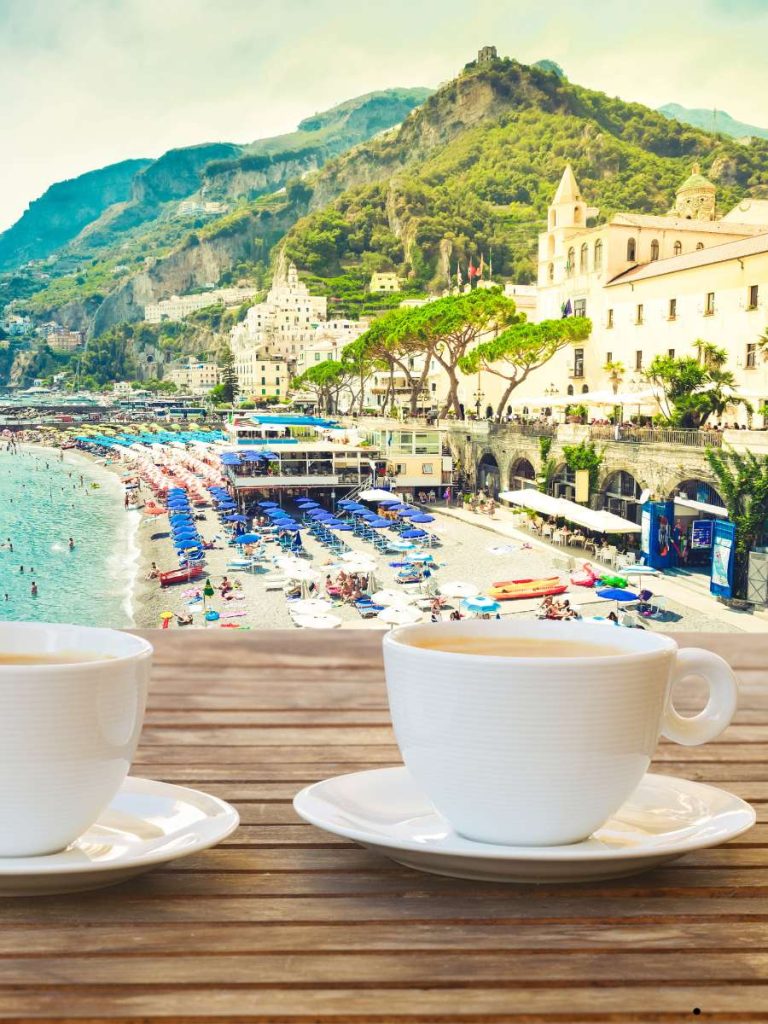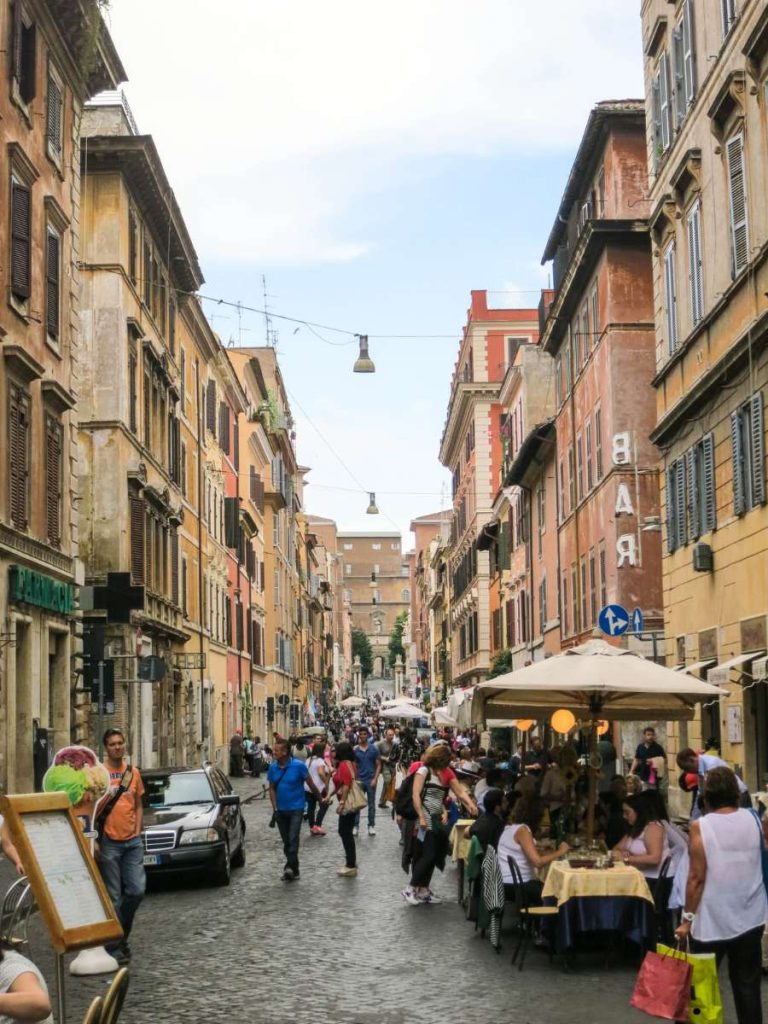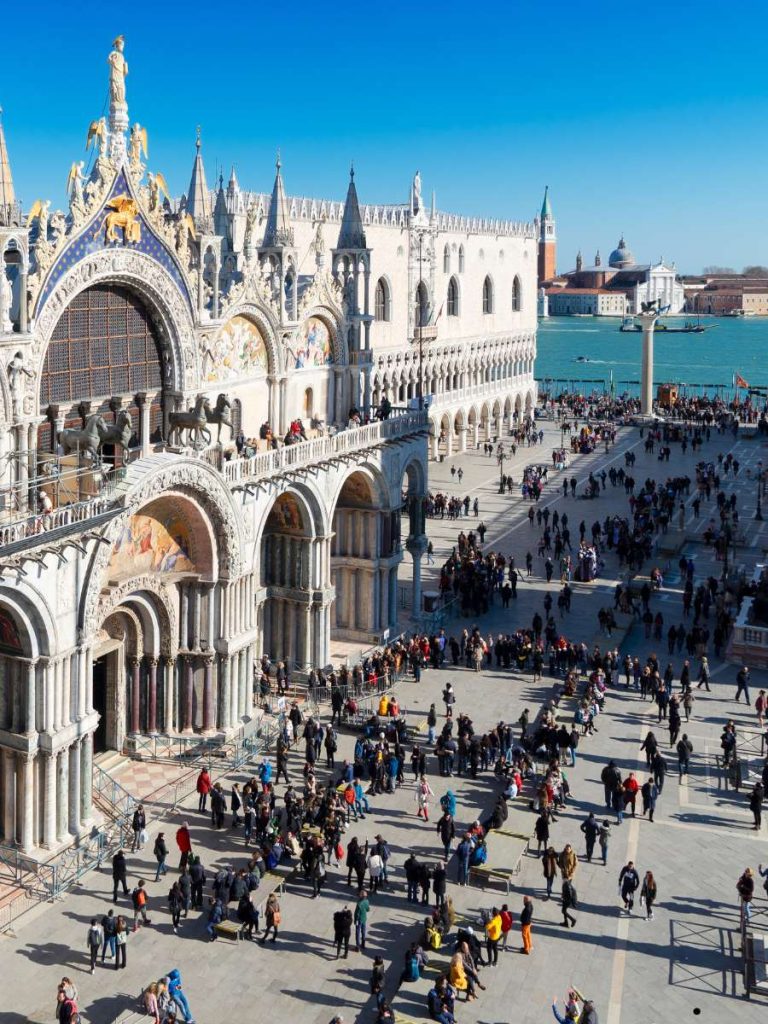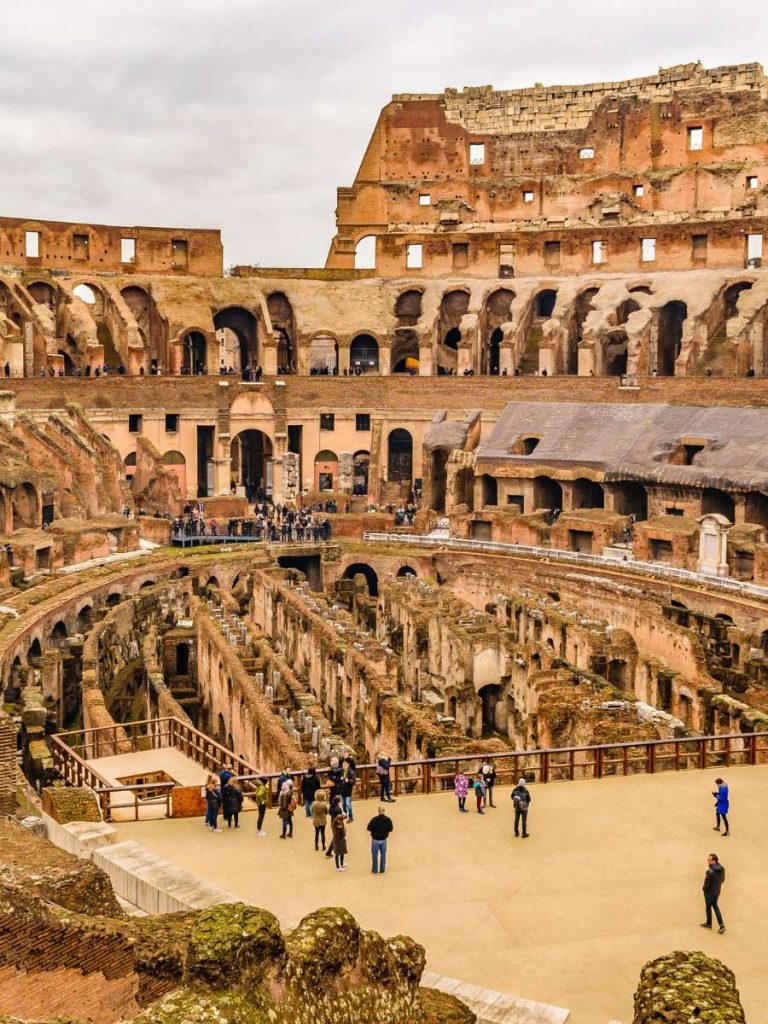I treat visiting other countries the way I treat visiting other people’s homes. If you have visited many houses/homes, as I have, you would know that each is different in the way its owners operate. Countries are not different from homes.
Trust me, you don’t want to travel to Italy only to look uncultured or uncouth. Italians are famously hospitable, welcoming visitors with open arms—but like any culture, there are unspoken rules that, when ignored, can make locals cringe. While they may be too polite to say anything outright, certain tourist behaviors secretly drive them up the wall.
The key to a truly enriching Italian experience isn’t just ticking off landmarks—it’s blending in, respecting traditions, and avoiding the faux pas that mark you as that tourist. Italians take pride in their customs, from food rituals to social etiquette, and while they’ll forgive innocent mistakes, understanding these nuances will earn you goodwill—and maybe even a few insider tips.
So, before you order that cappuccino with dinner or slap Parmesan on your seafood pasta, let’s dive into the 11 things Italians quietly despise—and how you can sidestep them to travel more thoughtfully.
1. Ordering a Cappuccino After 11 AM

In Italy, coffee isn’t just a drink—it’s a ritual with unbreakable rules. One of the quickest ways to signal that you’re a tourist is by ordering a frothy cappuccino in the afternoon or after a meal. Italians strictly associate milk-based coffees with breakfast, believing that heavy dairy disrupts digestion later in the day. If you see locals sipping espresso at a bar midday while you’re clutching a milky cup, you’ve already broken the code.
This isn’t just about preference; it’s deeply ingrained in Italian food culture. Espresso, macchiato, or even a caffè corretto (with a splash of liquor) are acceptable post-meal choices, but cappuccino is strictly a morning affair. Some cafés will serve it to you anyway to accommodate tourists, but don’t be surprised if the barista gives you a subtle side-eye.
If you truly can’t function without your afternoon latte, take it as an opportunity to adapt. Embrace the Italian way—stand at the bar, knock back a quick espresso, and move on. You’ll not only fit in better but might find that the strong, bitter kick is exactly what you need to power through the rest of your day.
2. Asking for Cheese on Seafood Pasta

Italian cuisine is all about balance and respecting the integrity of ingredients—which is why requesting Parmesan or pecorino on seafood pasta is practically sacrilege. Dishes like spaghetti alle vongole (clam pasta) or linguine al pescatore (seafood linguine) are crafted to highlight the delicate flavors of the sea. Adding cheese overpowers those nuances, and to Italians, it’s like dumping ketchup on fine sushi.
This rule isn’t arbitrary; it’s rooted in centuries of culinary tradition. Cheese is meant for hearty, land-based dishes—think carbonara, amatriciana, or ragù alla Bolognese. Seafood, on the other hand, stands on its own. Some chefs might even refuse to grate cheese onto your dish if they see you reaching for it, not out of rudeness but out of pride for their craft.
Instead of defaulting to cheese, trust the chef’s seasoning. A drizzle of high-quality olive oil, a squeeze of lemon, or a sprinkle of fresh herbs can elevate seafood pasta without masking its natural flavors. When in doubt, follow the locals’ lead—if no one at nearby tables is adding cheese, take the hint.
3. Expecting Dinner at 6 PM
American dining habits often revolve around early dinners, but in Italy, showing up at a restaurant at 6 PM is a surefire way to find it closed—or empty. Italians eat late, with dinner service typically starting around 7:30 or 8 PM, and many locals don’t sit down until 9 or even 10 PM. This isn’t just a preference; it’s a cultural rhythm tied to Italy’s workday and social life.
Attempting to eat on an early schedule can leave you with limited options, often in tourist traps catering to foreigners. Authentic trattorias and osterias don’t even fire up their kitchens until later. Instead of fighting the system, adapt. Enjoy a late lunch, then embrace the aperitivo culture—a pre-dinner ritual of drinks and light snacks that tides you over until your proper meal.
If you’re truly starving before dinnertime, seek out a pizzeria al taglio (pizza by the slice) or a paninoteca (sandwich shop) for a quick bite. But for the full Italian experience, reset your internal clock. Dining late means leisurely meals under the stars, lively conversations, and the true essence of la dolce vita.
4. Speaking Loudly in Public Spaces

Italians are known for their animated conversations, with hands flying and voices rising in passion—but there’s a fine line between lively discussion and obnoxious noise. While locals express themselves with gusto, they also value the subtle art of restraint in certain settings. Tourists who bellow across piazzas, shout on quiet side streets, or laugh raucously in historic churches often draw disapproving glances. The key difference? Italians modulate their volume based on context.
In places like markets, bustling cafés, or during a heated football debate, raised voices blend right in. But in residential neighborhoods, small family-run shops, or sacred spaces like churches and museums, loudness is seen as disrespectful. Italians take pride in their surroundings, whether it’s the echoing halls of the Duomo or the hushed aisles of a neighborhood bakery. Disrupting that atmosphere with a booming voice or a phone call on speakerphone marks you as an outsider who doesn’t understand the rhythm of daily life.
To avoid standing out, take cues from those around you. If the room is filled with murmurs, match that energy. Even if you’re excited or lost, lowering your voice when asking for directions or discussing plans shows awareness—a small gesture that locals notice and appreciate. Think of it as blending into the symphony of Italian life rather than drowning it out.
5. Wearing Revealing Clothes in Churches
Italy’s churches are among the most breathtaking in the world, from St. Peter’s Basilica to Florence’s Santa Croce—but they’re also active places of worship, not just photo ops. Walking into these sacred spaces in shorts, tank tops, or miniskirts isn’t just frowned upon; many enforce strict dress codes requiring covered shoulders and knees. While some major tourist sites provide shawls or paper cover-ups, relying on these is a dead giveaway that you didn’t plan ahead.
This rule isn’t about modesty for its own sake; it’s about respect. Italians, even those who aren’t religious, view churches as cultural and spiritual treasures. Dressing appropriately shows you recognize their significance beyond their Instagram appeal. In small towns, where churches are central to community life, ignoring the dress code can feel like a slap in the face to locals who still gather there for Mass and festivals.
The fix is simple: Carry a lightweight scarf or wear a breezy linen shirt over your tank top when visiting religious sites. In summer, loose pants or a maxi skirt are comfortable and compliant. Not only will you avoid being turned away, but you’ll also feel more in tune with the solemn beauty of these spaces—something no amount of hurriedly draped tissue paper can replicate.
6. Treating Piazzas Like a Picnic Spots

There’s something undeniably magical about eating in an Italian piazza—but there’s a right and wrong way to do it. Plopping down on the steps of the Doge’s Palace with a grocery-store panino and a soda screams “tourist.” Italians rarely picnic in historic squares, especially not with disposable wrappers or sprawling feasts. These spaces are living monuments, not backdrops for makeshift meals.
The distaste isn’t just about litter (though that’s part of it). It’s about the erosion of dignity in places that have hosted centuries of history. Imagine a visitor lounging on the Lincoln Memorial with a takeout box—that’s how Italians feel seeing people treat their cultural landmarks like park benches. Cafés with outdoor seating exist for a reason: They let you enjoy the view while supporting local businesses and keeping the space pristine.
If you must eat on the go, find a public park or a less monumental square where locals relax. Better yet, embrace the Italian aperitivo tradition: Order a spritz at a bar, enjoy the free snacks that come with it, and soak in the ambiance without overstaying your welcome. The piazzas will thank you—and so will the Italians watching from nearby tables.
7. Assuming Everyone Speaks English
It’s easy to fall into the trap of thinking English is a universal language, especially in tourist hubs like Rome or Venice. But while many Italians do speak English—particularly younger generations and those in hospitality—launching into rapid-fire English without so much as a “Buongiorno” comes off as entitled. Italy is a country where regional dialects still thrive, and language is deeply tied to identity.
Making an effort matters. Even a butchered “Mi scusi, parla inglese?” (Excuse me, do you speak English?) shows respect. Italians will often meet you halfway if they see you trying, switching to English with relief once the ice is broken. But barking orders in another language assumes the world revolves around your needs—a mindset at odds with Italy’s emphasis on social grace.
Keep a few key phrases handy: “Per favore” (please), “Grazie” (thank you), and “Dov’è il bagno?” (Where’s the bathroom?) go a long way. If you’re met with a blank stare, pantomime with a smile. The attempt alone can turn frustration into a moment of connection—and you might just earn a patient language lesson from a kindly nonna.
8. Over-Tipping (Or Not Tipping Correctly)

Tipping in Italy isn’t the minefield some guides make it out to be, but doing it wrong—whether overzealously or not at all—can raise eyebrows. Unlike in the U.S., where 20% is standard, Italian servers earn a living wage, and a coperto (cover charge) is often included in your bill. Tossing down huge tips can feel performative, while leaving nothing at all after great service seems stingy.
The sweet spot? Rounding up or leaving small change for good service (€1-2 at a café, €5-10 at a nice restaurant). If you’re unsure, check your bill for “servizio incluso”—if it’s there, extra tipping is purely optional. What Italians truly appreciate is acknowledging exceptional service with a personal touch: A sincere “grazie” to your waiter or a compliment to the chef carries more weight than an impersonal stack of euros.
One exception: Tour guides. For multi-hour tours, especially private ones, a tip of €5-10 per person is a thoughtful gesture. Just hand it discreetly at the end—no fanfare needed. Italians value subtlety in all things, and tipping is no exception.
9. Rushing Through Meals
In Italy, dining isn’t just sustenance—it’s theater, therapy, and a cornerstone of social life. Meals unfold in multiple acts: antipasto, primo, secondo, dolce, with espresso as the curtain call. Asking for the check while still chewing your last bite (or worse, requesting boxes for leftovers) tells your server you’ve missed the point entirely.
This isn’t just about pacing; it’s about respect for the kitchen’s rhythm. Dishes are prepared to order, not microwaved en masse. Rushing implies you view the food as fuel, not an experience to savor. Italians might politely accommodate you, but inwardly, they’re mourning the tragedy of a steak eaten under duress or a tiramisu shoveled down like fast food.
To dine like a local, surrender to the tempo. Let courses arrive naturally, linger over wine, and people-watch between plates. If you’re in a hurry, opt for a tavola calda (buffet-style eatery) or a standing espresso at the bar. But for the love of mozzarella di bufala, don’t turn a three-star trattoria into a drive-thru.
10. Mispronouncing Italian Words (Especially Food)
Nothing makes an Italian wince faster than hearing “bru-shet-ta” instead of broo-SKET-ta or “pee-zah” instead of PEET-zah. Pronunciation isn’t just about being understood—it’s a sign of engagement with the culture. Italians know their language is musical and precise; mangling it is like playing a Mozart concerto with mittens on.
Some common offenders: gnocchi (NYOH-kee, not “nokey”), prosciutto (pro-SHOOT-toh, not “pro-shoo-toe”), and panino (pa-NEE-no; “panini” is plural). Even small efforts, like rolling your R’s in “grazie,” show you care. Most Italians will gently correct you with delight, not mockery—unless you insist on ordering “fettuccine Alfredo” (a dish that doesn’t exist outside tourist traps).
Pro tip: Listen first. Repeat what your server says, even if it feels silly. You’ll not only avoid culinary embarrassment but might spark a conversation about regional dialects—the ultimate icebreaker.
11. Treating Historic Sites Like a Theme Park

The Colosseum isn’t Disneyland. Venice’s canals aren’t a water park. Yet some tourists treat Italy’s heritage like a playground—climbing on ruins for selfies, dipping feet in fountains, or scratching initials into 500-year-old frescoes (yes, this happens). To Italians, these aren’t just “old things”; they’re sacred touchstones of collective identity.
The rules are simple: Don’t touch art, don’t stray from marked paths, and don’t treat monuments like props. Even seemingly harmless acts, like sitting on the Spanish Steps (now technically banned), signal disregard for preservation. Italy’s cultural ministry employs armies of restorers to undo damage caused by sunscreen stains, chewing gum, and wandering hands.
Visit with reverence. Marvel at the engineering of the Pantheon’s dome without testing its acoustics by yelling. Admire the Vatican’s mosaics without flash photography. Leave no trace except your awe—and maybe a few euros in the donation box. Future generations (and the nonna glaring at you) will be grateful.
What Italians Actually Appreciate from Tourists
For all these pet peeves, Italians are overwhelmingly generous to visitors who show curiosity and respect. Attempting a few words of Italian, asking about regional specialties, or expressing genuine interest in traditions can transform your trip. Locals light up when you admire their hometown’s hidden gem—not just the Leaning Tower, but the unassuming osteria where the tortellini is folded by hand.
Small gestures matter: Greeting shopkeepers when entering, letting elders board the tram first, or toasting with eye contact during aperitivo. These aren’t “rules” to memorize but rhythms to slip into. The happiest travelers in Italy aren’t those who see everything—they’re those who feel like they belong, even briefly.
So go ahead, order that second gelato. Laugh too loudly at a piazza joke. Get lost down an alley that isn’t in your guidebook. Just do it with the awareness that you’re a guest in a living, breathing culture—one that’s survived millennia precisely because it knows what’s worth protecting.
La dolce vita isn’t a checklist. It’s a conversation. Time to start listening.

